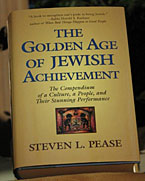Excerpt:
Philantropy©
Philanthropy in America
In visiting France - or most of Europe for that matter - it is striking that most institutions, most hospitals, museums, schools or similar public facilities are either public or private. Few "not-for-profit" institutions are established by French citizens. Unlike most of our Ivy League schools, the Sorbonne is run by the Ministry of Education. Unlike New York's St. Patrick's cathedral, Notre Dame and Chartres cathedral are supported by French taxes. Unlike the Metropolitan Museum of Art, the Louvre is an organ of the Ministry of Culture.
In October, 2001, Daniel Boorstin wrote an essay "From Charity to Philanthropy." It drew on an earlier essay of the same name from his book Hidden History. Boorstin's essays make the point that, dating back to the Mayflower Compact, America's history has consistently generated independent, vigorous individuals who, upon seeing need for a new institution or service, established a voluntary organization to plan, fund, and run it. America has no hereditary monarchy that might see meeting such needs as its duty; nor is there a government or monarch that might find such independent acts threatening.
Boorstin thought of non-Jew, Ben Franklin, as America's "patron saint of philanthropy." Franklin saw the need for, and helped establish, the Philadelphia police. He promoted paving, cleaning and lighting of city streets. He organized the circulating library and arranged an Academy for the Education of Youth ' later to became the University of Pennsylvania. He also helped set up the volunteer fire department. Citizen activism, seeing a need, organizing for it and getting it funded, is a peculiarly American phenomenon. It may arise from our revolutionary history, the lack of government on the frontier, or the independent spirit and self reliance we think of as part of the American character. Alex de Tocqueville saw and commented on it in the 1830s when he visited the United States. He was fascinated by the remarkable number of voluntary associations he found in the United States. But, no matter the source, voluntary non-profit organizations to meet society's needs are an American reality.
Daniel Gross, in reviewing the new book: The Greater Good: How Philanthropy Drives the American Economy and Can Save Capitalism by Claire Gaudiani, noted that "In the U.S., where 89 percent of Americans made voluntary contributions in 2001, and more citizens give than vote, we collectively give about 2 percent of our Gross Domestic Product (GDP) to charity; the parsimonious Brits give just 0.7 percent." Jonathan Freedland, a British Citizen, made a similar point in his July 3, 1998 article for the New Statesman, "Lessons from America (Citizen Power in the U.S.)." In it he cited comparable donation statistics from 1993 ($880 per average American family, versus $300 for the Brits) and then went on to note that "more than half of all Americans ' 54 percent ' volunteer for charitable or social service activities involving the poor, the sick or the elderly. The average volunteer gives up four hours per week...."
